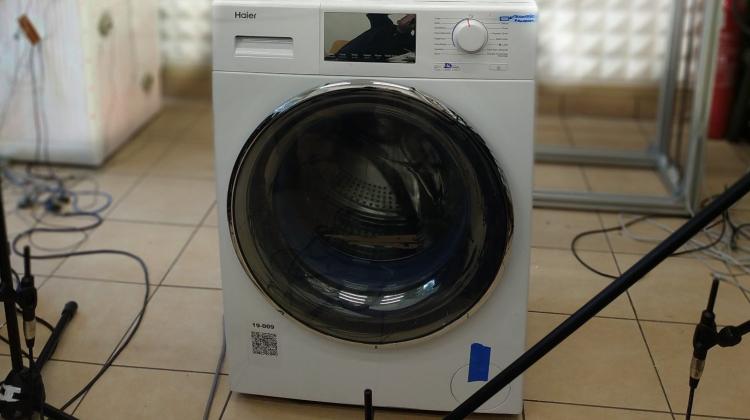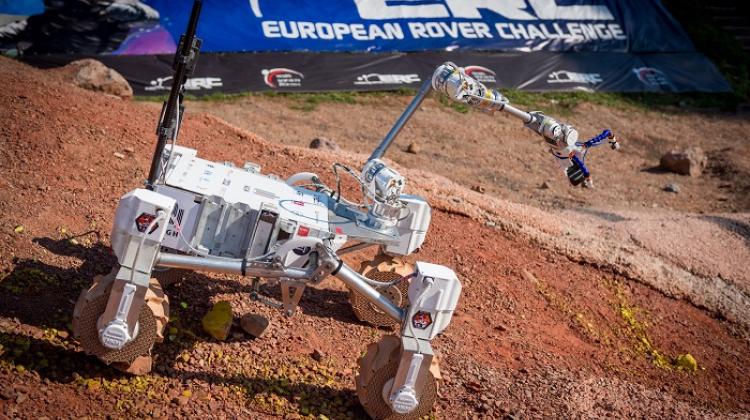In search of silence... among devices
 Photo from Stanisław Wrona's archive
Photo from Stanisław Wrona's archive
Noise generated by various devices can be reduced thanks to shields that eliminate sound waves. The problem occurs when devices emit heat, which is why the housing should have vents. Dr. Stanisław Wrona from the Silesian University of Technology is looking for a solution to this problem.
The scientist from the university’s Faculty of Automatic Control, Electronics and Computer Science is the winner of the award of the Division IV. Technical Sciences of the Polish Academy of Sciences. He was appreciated for a series of papers titled: 'Modelling, optimisation and control in noise reduction systems'.
'Due to the use of a growing number of devices and machines, we have more and more noise in our environment. According to the World Health Organization (WHO) findings, noise is the second (after polluted air - ed.) cause of environment-related health problems', Dr. Stanisław Wrona tells PAP - Science in Poland.
The classic approach to reducing noise from devices are passive methods, i.e. adding an additional cover to the device, the functioning of which is based on the sound-absorbing properties of the material. 'However, this method involves the use of additional materials, which means both higher costs and additional weight, and we cannot afford this everywhere. There is also the problem of thermal insulation, because these materials are often good thermal insulators,’ Wrona says.
The second type of approach to noise reduction are active methods, which involve appropriate 'control' of the housing so that the vibrations resulting from this modification eliminate sound waves.
'In active methods, we add energy to the object and, using a control signal called anti-noise, we achieve the so-called destructive interference of sound waves. Our goal is global noise reduction, i.e. reducing noise emitted to the surroundings in every direction. In this case, the best solution is to combine a passive method (in the form of a housing) with an active method (in the form of a vibration control system),’ Wrona continues.
Currently, the scientist and his research team are trying to solve the problem of heat dissipation. 'Housings of some devices require vents, so we are working on developing an anti-noise generation system that would prevent noise from escaping from vented housings,’ he explains.
The scientists deal with solutions for both industrial machines and household appliances. According to the researcher, the manufacturers of the latter are particularly interested in cooperation with scientists because this is what consumers expect - for example, quieter washing machines.
'In the case of a washing machine, we are dealing with a broad spectrum of frequencies. Appropriate solutions must be found for each frequency range: low, high and medium. For the first type, active noise reduction works well, for high frequencies - a layer of sound-absorbing material, e.g. felt. For the medium range - we are still looking for solutions to make it effective, low-cost and suitable for mass production,’ says Wrona.
Current global trends show interest in increasingly lighter devices, which is associated with weaker acoustic insulation (due to less material). 'At the same time, there is also a visible trend in the development of new materials whose structure in the form of a certain spatial grid will allow for better noise reduction with less material used,’ he adds.
The issue of noise reduction from devices is being addressed by scientists all over the world. An example of international cooperation is a scientific and industrial project from the EU Horizon Europe Programme, which is carried out by a team including researchers from the Silesian University of Technology, under the supervision of Professor Marek Pawełczyk.
'We can still do a lot with active methods, because these systems are becoming cheaper and more efficient and it seems that soon the high cost will no longer be a barrier to implementation,’ Wrona says.
PAP - Science in Poland, Agnieszka Kliks-Pudlik
akp/ agt/ kap/
tr. RL
Przed dodaniem komentarza prosimy o zapoznanie z Regulaminem forum serwisu Nauka w Polsce.



















